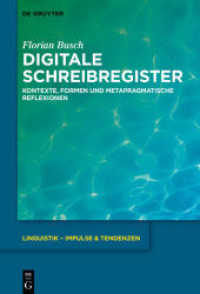- ホーム
- > 洋書
- > 英文書
- > Psychology
Full Description
The emerging field of educational neuroscience presents opportunities as well as challenges for education, especially when it comes to assess the learning disorders and learning intentions of the students.The most effective learning involves recruiting multiple regions of the brain for the learning task.






